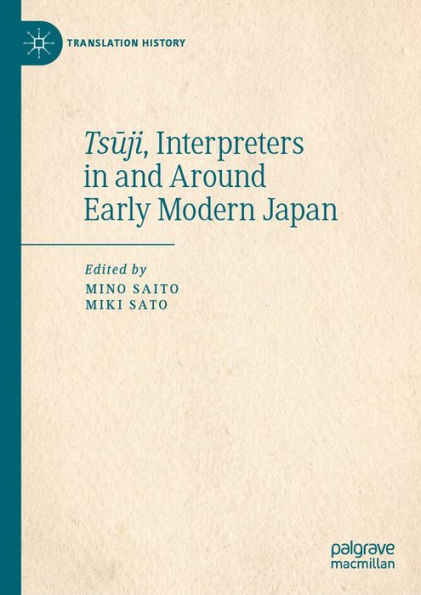This book introduces English-speaking audiences to tsūji, who were interpreters in different contexts in Japan and then the Ryukyu Kingdom from the late 16th to the mid-19th century. It comprises seven historical case studies on tsūji in which contributors adopt a context-oriented approach. They aim to explore the function of these interpreters in communication with other cultures in different languages, including Japanese, Dutch, Chinese, Korean, Ryukyuan, English, Russian and Ainu. Each chapter elucidates the tsūji and the surrounding social, political and economic conditions. The book will be of interest to students and scholars of translation and interpreting, but also readers interested in the early modern history of interpreting and cultural exchange. It will similarly appeal to those interested in the Japanese language, but with limited access to books written in Japanese.
1143644797
Tsuji, Interpreters in and Around Early Modern Japan
This book introduces English-speaking audiences to tsūji, who were interpreters in different contexts in Japan and then the Ryukyu Kingdom from the late 16th to the mid-19th century. It comprises seven historical case studies on tsūji in which contributors adopt a context-oriented approach. They aim to explore the function of these interpreters in communication with other cultures in different languages, including Japanese, Dutch, Chinese, Korean, Ryukyuan, English, Russian and Ainu. Each chapter elucidates the tsūji and the surrounding social, political and economic conditions. The book will be of interest to students and scholars of translation and interpreting, but also readers interested in the early modern history of interpreting and cultural exchange. It will similarly appeal to those interested in the Japanese language, but with limited access to books written in Japanese.
149.0
In Stock
5
1

Tsuji, Interpreters in and Around Early Modern Japan

Tsuji, Interpreters in and Around Early Modern Japan
Related collections and offers
149.0
In Stock

Product Details
| ISBN-13: | 9783031376528 |
|---|---|
| Publisher: | Palgrave Macmillan |
| Publication date: | 09/27/2023 |
| Series: | Translation History |
| Sold by: | Barnes & Noble |
| Format: | eBook |
| File size: | 3 MB |
About the Author
From the B&N Reads Blog
